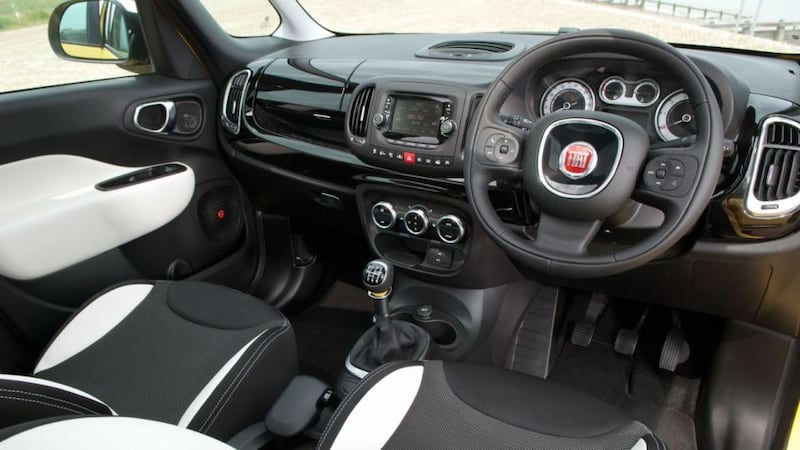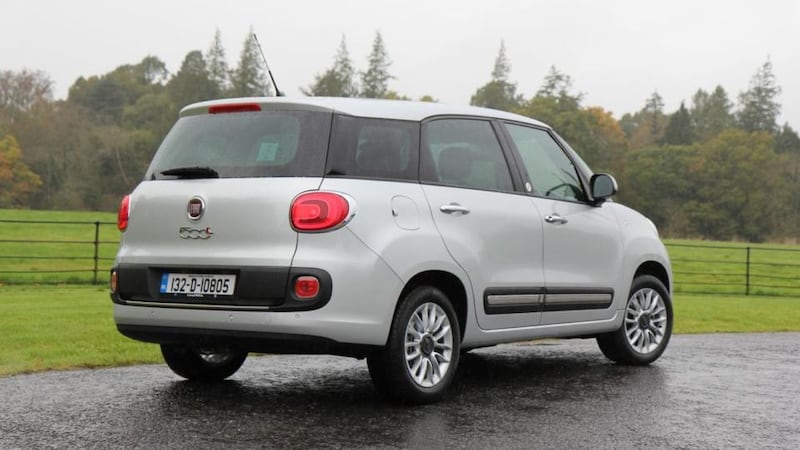"We know where we went wrong and we're out to fix it." That's the message from Fiat's new management team in Ireland as the Italian brand makes yet another push to revive its flagging fortunes.
Yann Chabert is the affable 42-year-old Frenchman who has accepted the Herculean challenge of rebuilding a brand with just 0.6 per cent of the market here. So far this year, of 73,391 new registrations, just 444 were Fiats – and 30 per cent of those were demonstration models registered by the firm or to its 12 Irish dealers.
The revival plan involves focusing on funky and fun variants of the 500 range. Although there will still be room for practical small cars in the future, Chabert says, the first step is to build on the 500's success. In truth he has little choice, for Fiat's new-product pipeline is dust-bowl dry for the next 12 months or so. When the recession bit, Fiat's chief executive, Sergio Marchionne, switched the firm's priorities to getting its recently acquired Chrysler division back in the black and focusing on potential for growth in Asia.


Europe was not worth the investment. Why spend hundreds of millions on a new model at a time when consumers were shunning new cars? It might have drawn consternation from within Fiat's European ranks, but there seemed to be a good deal of sense in his decision.
But the problem with putting new-car development on the back burner is that it can take several years to return it to the boil. In the meantime rivals can elbow you out of the public's gaze. That's effectively what has happened to Fiat. The Korean brands have proven to be masters of the value-quality balance – and have shown the Italians that affordable brands can crack the larger saloon and SUV markets, where margins are better. Meanwhile, newcomers such as Dacia have taken control of the price-sensitive end of the market. By parking its new-car launches until Europe's economy picks up, Fiat has ceded its traditional stomping grounds. It's going to have a tough battle to win back buyers.
It’s not helped by the fact that the next 18 months for Fiat will revolve around one model, the 500 – on sale since 2008 in its current guise – and a couple of derivatives.
While Neil tested the seven-seat 500L MPW (see below), I put the 500L Trekking through its paces.
This is supposedly the more masculine version of the big Fiat, aimed at drawing male buyers to the range with restyled bumpers, alloys and upgraded traction control. The test car was in the firm’s launch colours: a blinding yellow body with a white roof. It’s a colour combination that doesn’t scream masculinity.
The problem with enlarging the funky 500 into a fully fledged hatchback is that it loses much of its charm in the process. The personality of the regular 500 is partly down to is plucky demeanour. By scaling it up, functionality replaces fun and it just becomes an odd-looking big-box family car in silly colour combinations.
On the plus side, there’s a fantastic sense of space, thanks largely to the high roof. But most of the space is above your head, so it’s largely useless unless you’re 7ft tall. You’d think such a large car would be hugely practical, but with all the seats in use the boot isn’t all that impressive.
Then there are the ergonomics. The high sitting position gives crossover-like visibility. But in the test car, though the steering column can be adjusted for height, there is no combination of seat-height adjustment or steering-wheel adjustment that doesn’t block out some key numbers between 80km/h and 130km/h on the speedometer. You keep having to duck or twist to check your motorway speed.
Then there’s the ride quality, which is choppy, even on motorway runs. The body seems to sit atop the chassis rather than feel integral to it. That also shows in corners: sharp turns of the steering wheel cause the front wheels to turn but the body feels as if it’s lagging behind. The car’s sides also catch the wind on gusty days.
Finally there’s the engine range: the lauded 900cc twin-turbo petrol and two diesels, the 1.3-litre tested by Neil and this 105bhp 1.6-litre, which is able to pull the large Fiat along within the speed limit but could never be described as sparkling.
The starting prices for the regular 500L range, at €21,750 for the petrol and €22,500 for the 1.3-litre diesel, make it competitive, but it's hard to see why buyers would ignore the VW Golf or Ford Focus – both of which handle better and are more comfortable – in order to own this Fiat. The same can be said of the 500L Trekking.
The seven-seat 500L MPW seems better value at €24,300 for the 1.3-litre diesel, but that's only as its odd look breaks away from standard family fare. The price is not a lot better than those of 5+2-seater rivals from Ford or Opel, to name but two.
Anyone interested in motoring heritage will want Fiat to climb back up the sales charts. For all its ills, the firm created some cracking little cars in its time.
The 500L is not another vainglorious effort to pitch Fiat among the global giants. It's a limited-appeal derivative, more important for showing Fiat is still fighting than for signalling the future of the brand.
NO, REALLY?
Fiat 500L MPW 1.3 MultiJet Lounge
The Fiat 500L is a car that inspires a certain amount of "Really?" The MPW version is a car that inspires rather a lot of "No, really?"
There's the name for a start. I can understand Fiat trying to cash in on the 500 brand, as BMW has with Mini, but ballooning a 500 look to fit an MPV- crossover body – and then stretching it still further for the MPW – seems a step too far (although, perversely, I think the MPW is slightly more interesting than the 500L: the back has a touch of 1950s Americana).
Inside, there is much to like, including (on this top-spec Lounge model) a suede dash, a 5in infotainment touch screen and comfy, lofty seats. It’s a shame that the steering wheel obscures part of the main dials and that the handbrake release squeaks.
The extra seats in the back are easy to flip into place, and the middle row tumbles forwards with equal ease to allow access, but there’s not much real space back there, and young kids in bulky safety seats are going to find it a squeeze. Fiat admits as much, and refers to the car not as a proper seven-seater but as a 5+2 – third row for occasional use only (or just for people you don’t like very much). Fold them flat, though, and the boot is a huge 493 litres.
With an entry price of €23,550, it's one of the more affordable seven-seaters on the market, but don't forget that for the same price as the most basic MPW you can have a Fiat Doblo Eleganza 1.6 diesel with lots of toys and seven full-sized seats. Yes, it's a van, but it's barely different to drive from this 500L and is a lot more practical.
Neil Briscoe















